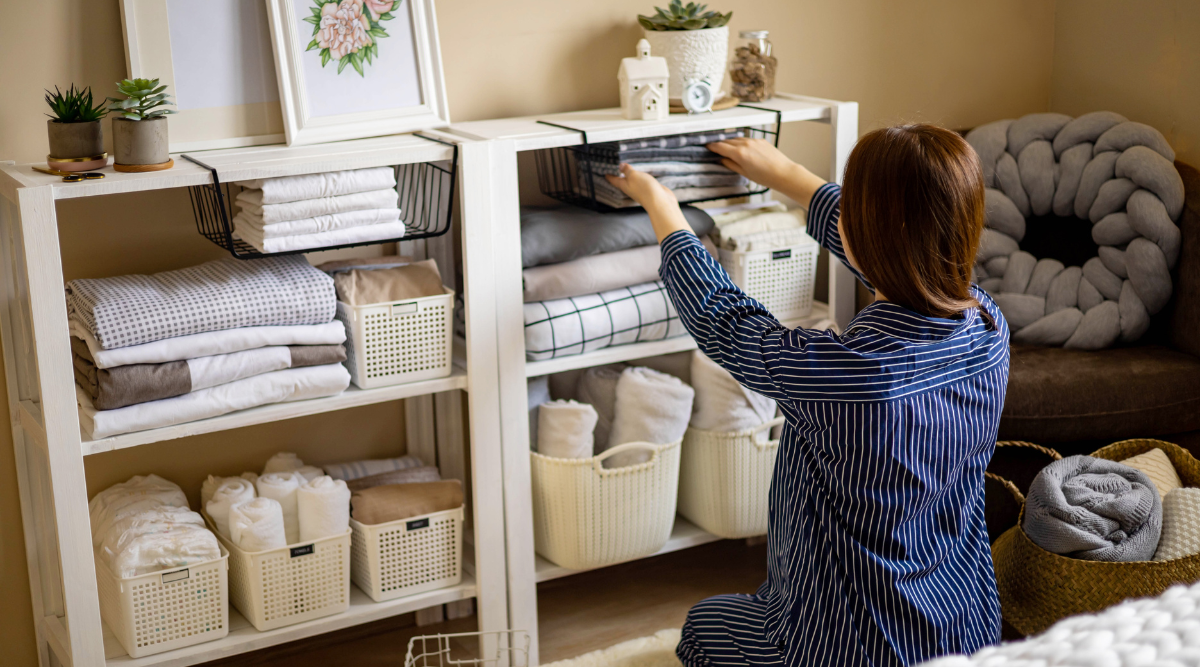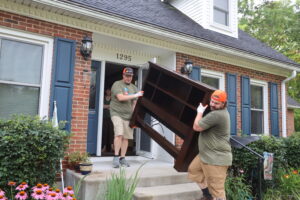Decluttering isn’t just about having a neater home—it’s about creating space to breathe, think clearly, and live intentionally. Whether you’re simplifying before a big move, embracing a minimalist lifestyle, or looking to give your extra stuff a second life through donations, choosing the right decluttering method can make all the difference. Better yet, it can even support local communities when you donate items instead of tossing them. Let’s explore seven of the most effective ways to declutter your space and your mind.
1. The Marie Kondo Method
Made famous by her Netflix series and bestselling books, Marie Kondo’s KonMari Method is all about keeping only what “sparks joy.” The process involves sorting by category (not by room), beginning with clothes, then books, papers, miscellaneous items, and sentimental belongings.
Assess each item and ask yourself: “Does this spark joy?” If the answer is no, thank it for its service and let it go. Place it into a donation pile. It’s as much about emotional connection as it is about physical space.
Ideal spaces for using this method include:
- Clothing closets
- Book collections
- Sentimental keepsakes
- Decor-heavy rooms
2. The Reverse Decluttering Method
Instead of asking what to get rid of, reverse decluttering flips the question: “What do I absolutely need or love?” Start by emptying a space completely and then putting back only the things you actively use or enjoy. The rest becomes clutter by default.
Pro tip: If you think you use all of your items all the time, try imagining that you are moving somewhere temporarily. Examples include a 2-month stint in your favorite city, or even moving to college for the semester. If you only had 2 suitcases what would absolutely have to come?
The pros of this approach are that it:
- Makes you more intentional
- Eliminates emotional clutter
- Is great for deep clean-outs
Potential cons of reverse decluttering are that it can be time-consuming and potentially a challenge if you don’t have help.
3. The Snowball Method: Momentum-Based Decluttering
This method mimics the popular debt-reduction strategy. Start small—pick an area you can declutter quickly, like a drawer or shelf. Once done, move to a slightly bigger task, such as assessing your furniture or attic. As you build confidence, take on larger spaces. This method is about momentum. Success fuels motivation, and soon, the mess doesn’t feel so overwhelming.
Best areas to start with include:
- Junk drawers
- Entryway tables
- Bathrooms
- Guest bedrooms with less items
4. The Four-Box Method: A Visual Sorting Strategy
Create four containers (or spaces in your home for bigger items) labeled:
- Keep
- Donate
- Trash
- Relocate
As you move through your space, place each item into one of the boxes. This method is ideal if you’re visual and want tangible progress. The benefits of this method include clear decision-making, easy prep for donations, and is great when you have friends or family members to share the load with.
5. The Minimalist Game: 30 Days to a Lighter Home
This method gamifies decluttering: on day one, remove one item. On day two, remove two items, and so on until day 30. By the end, you’ve let go of 465 items! Try challenging a friend or family member and compare results. The accountability helps you push through to the finish line.
Staying motivated and boost accountability throughout the month in creative ways, such as:
- Sharing progress on social media (bonus: you might get more people to join the movement!)
- Use a printable checklist
- Celebrate by scheduling a full-service donation pickup through ReSupply
6. Zone Decluttering: Focused and Functional
Zone decluttering divides your home into manageable areas—one at a time. You may start with smaller areas like:
- Kitchen pantry
- Linen closet
- Garage tools
- Toy bins
Once you master these, you’ll feel more prepared to tackle larger areas like a garage of old housewares and furniture, basements-turned-storage areas, attics full of old, well-loved items, and even a whole house refresh.
Every time you start a new zone or room, set a timer. Even 15 minutes can make a visible difference! Plus, setting a finite amount of time may help you avoid getting stuck contemplating whether or not you want to part ways with an item.
Why this method works for busy households:
- No need to overhaul everything at once
- Flexibility for tight schedules
- Reduces burnout from decision fatigue
7. The 12-12-12 Challenge: Declutter by the Dozen
Choose a regular cadence that works for your lifestyle and pick 12 items to throw away, 12 to donate, and 12 to relocate. Aim to do this once a week with family or roommates to keep your space tidy year-round.
For this method, be mindful of which items you pick to throw away. Many items that go to landfill each year could have been repurposed or reused by someone in need. Throw away items that are legitimately trash or that have exceeded their useful life. Even in those cases, full-service donation pickup services like ReSupply will take these items as well and deliver them to a designated disposal facility.
Decluttering with Purpose: Donate, Reuse, ReSupply
Decluttering is a journey, not a one-size-fits-all process. Whether you choose Marie Kondo’s mindful joy-sparking or the practicality of zone cleaning, what matters most is finding a rhythm that works for your life. And remember: by donating items you no longer need, you’re helping people, supporting nonprofits, and reducing landfill waste.
The good news is that no matter the method of decluttering you choose, ReSupply offers a one-stop solution for item removal and donation pickups. ReSupply is the official pickup partner for 3000+ charities across the country. We work with vetted, licensed, and insured movers who will treat your donated items with the same care that you would. ReSupply pickups include white-glove service, from item disassembly, to carrying items up and down stairs, ensuring your donation can be hassle-free, no prep or heavy lifting required.
We’re here to help you declutter and make giving simple. Schedule your donation pickup with ReSupply now by calling (617) 917-9625 or clicking below.





